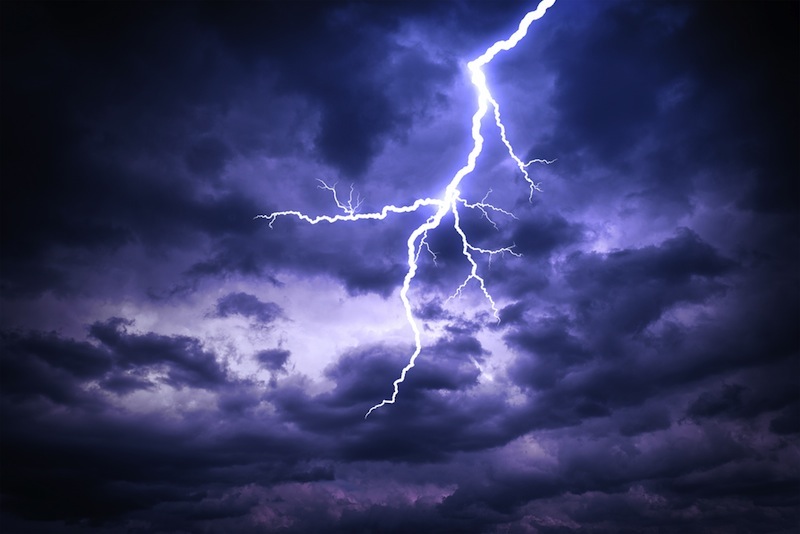Where Is the Most Lightning-Prone Place in the World?

Lake Maracaibo in Venezuela has a new claim to fame: This large bay has been revealed as the lightning capital of the world, with storms lighting up the skies almost 300 nights each year, according to a NASA study.
The largest lake in South America, Lake Maracaibo sits along the northern Andes Mountains, where the mountains form a natural barrier, pushing air up and mixing it with warm, moist air above the lake to create nocturnal thunderstorms. Researchers found that the lake gets 603 bolts of lightning per square mile (233 bolts per square kilometer) every year.
The previous titleholder, the city of Kabare in the Democratic Republic of Congo, gets 531 lightning bolts per square mile (205 bolts per square kilometer) annually. [Electric Earth: Stunning Images of Lightning]
"Lake Maracaibo has a unique geography and climatology that is ideal for the development of thunderstorms," Dennis Buechler, a research scientist at the University of Alabama in Huntsville, said in a statement.
Lightning occurs in thunderstorms when cold air and warm air interact. The cold air has ice crystals. The warm air has water droplets. Friction from the droplets and crystals bumping together creates positive and negative electrical charges in the clouds. When the negative charges at the bottom of the clouds get strong enough, electrical energy is let out in in the form of lightning that jumps to another positive structure on the ground or in the clouds.
These electrifying storms tend to be concentrated over land and usually occur in the afternoon, while there is typically less lightning over oceans, and when these storms do occur, they tend to be more nocturnal, according to the new research. Most of the continental lightning hotspots are located near mountain ranges, and they have a geography similar to that of Lake Maracaibo, revealing the importance of local topography in thunderstorm development, the researchers said.
Africa remains the continent with the most lightning hotspots, according to the study. It is home to six of the world's top 10 sites for lightning strikes, all of which are located along the Mitumba Mountains in Eastern Congo. Asia has the second-most lightning hotspots, with its most active regions located in the northwestern ridges of the Himalayas, near Daggar, Pakistan. South America is third in hotspots, followed by North America and Australia, according to the study, which was published online Feb. 17 in the Bulletin of the American Meteorological Society.
Sign up for the Live Science daily newsletter now
Get the world’s most fascinating discoveries delivered straight to your inbox.
In the United States, the researchers found that the most lightning occurs near Orangetree, Florida. This city in southern Florida ranks 14th in North America for the most lightning-prone places and 122nd globally, receiving almost 205 lightning flashes per square mile (79 flashes per square kilometer) every year, according to the study.
The researchers were able to determine these figures using 16 years of data from the Lightning Imaging Sensor (LIS) on NASA's Tropical Rainfall Measurement Mission satellite. Developed in the 1990s, the LIS detects the distribution and variability of total lightning in tropical regions around the world. It uses a specialized, high-speed, near-infrared imaging system and can spot brief lightning flashes even in bright daytime.
"We can now observe lightning flash rate density in very fine detail on a global scale," said Richard Blakeslee, LIS project scientist at NASA's Marshall Space Flight Center. "Better understanding of lightning activity around the world enables policymakers, government agencies and other stakeholders to make more informed decisions related to weather and climate."
Follow Knvul Sheikh on Twitter @KnvulS. Follow Live Science @livescience, Facebook & Google+. Original article on Live Science.










